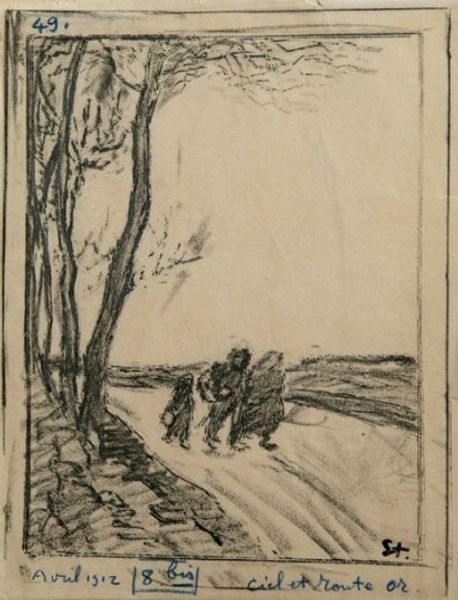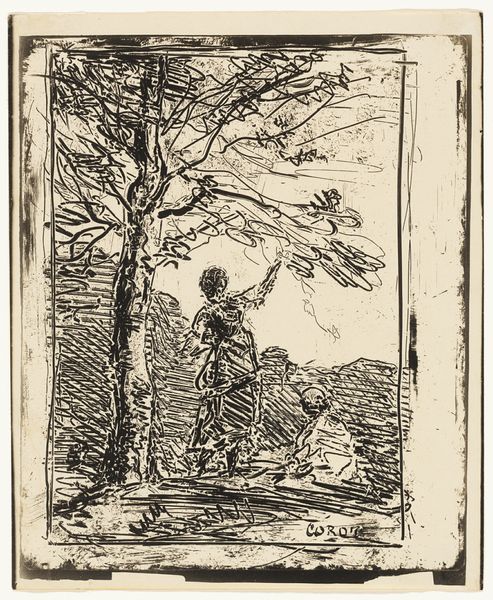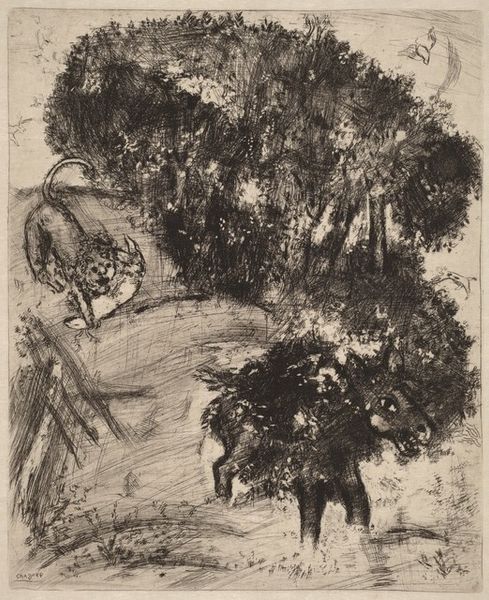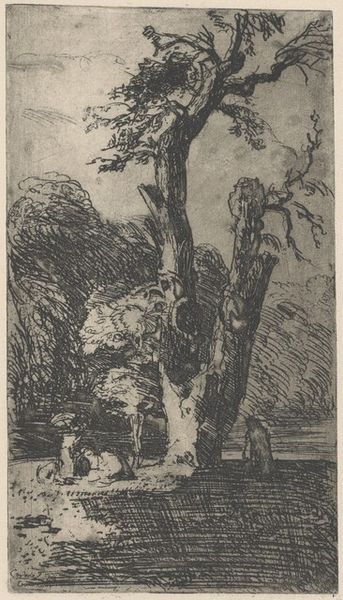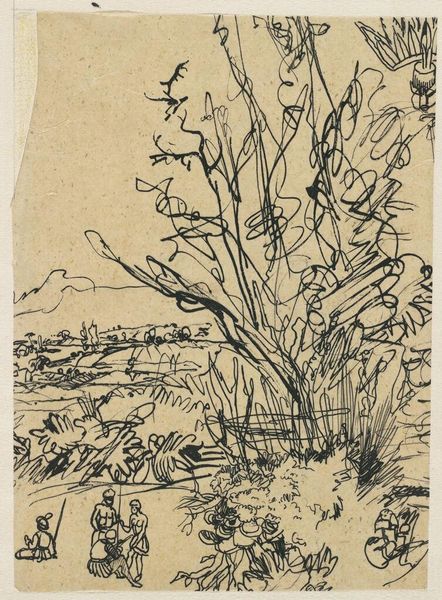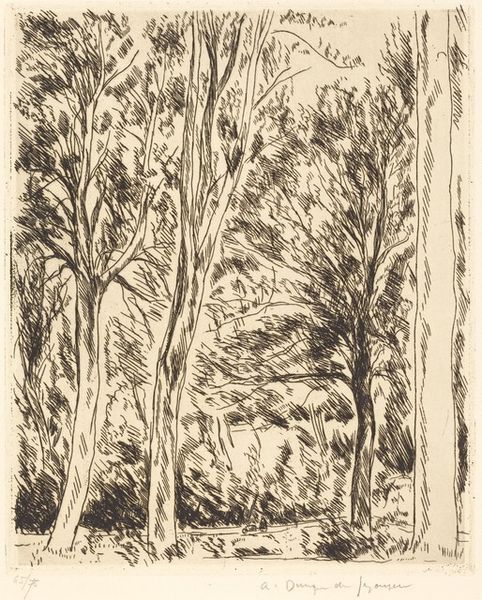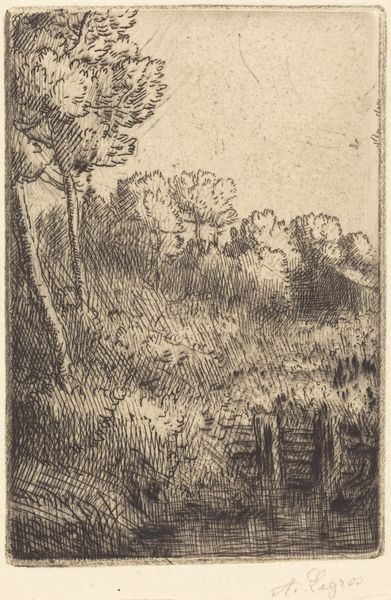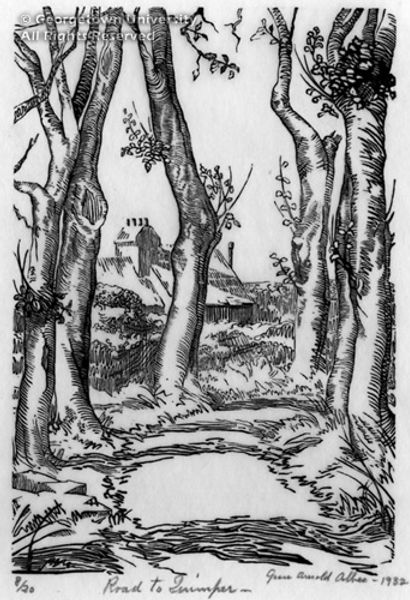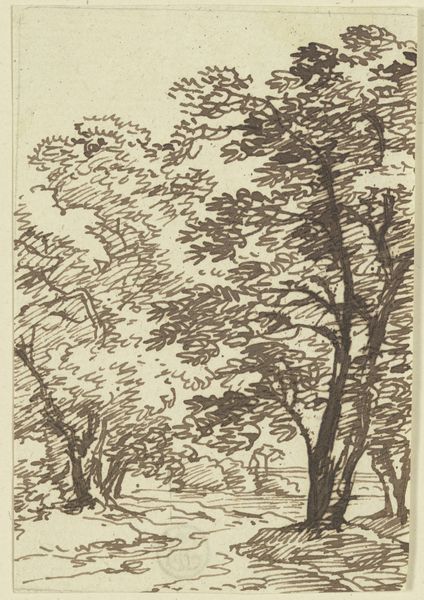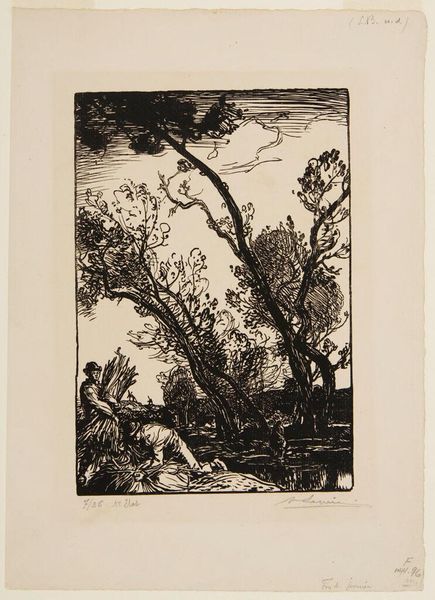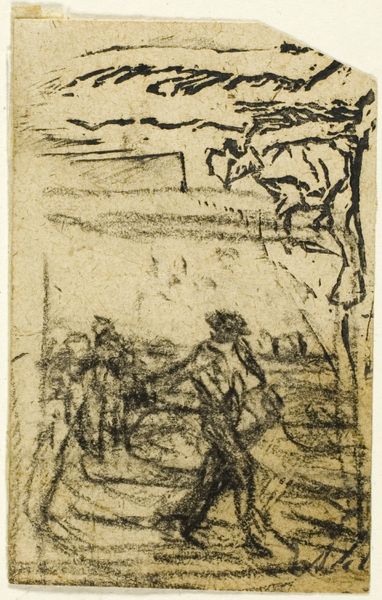
Copyright: CC0 1.0
Curator: Ernst Ludwig Kirchner's "Fruit Trees at Gollsberode," now residing at the Harvard Art Museums, presents a fascinating landscape. What's your immediate take? Editor: Stark. The crude, heavy application of ink gives it a rather unsettling feeling, despite the pastoral subject. You can almost smell the earth. Curator: Interesting. I see this as a reflection of the changing German landscape. The art world shifted dramatically in the early 20th century, moving to more public displays of artwork. Editor: And what of the material realities? Lithography allowed for wider distribution. This wasn't meant for a wealthy patron's private collection, but for a broader audience. It democratized art. Curator: Precisely! Kirchner, along with Die Brücke, sought to challenge academic traditions, both institutionally and aesthetically. Editor: It's a powerful piece, charged with an almost rebellious energy evident in its very making. The raw materials, the printing process, all speak to that. Curator: Agreed. It embodies a pivotal moment in art history. Editor: Absolutely. It’s an important example of art’s transformative power.
Comments
No comments
Be the first to comment and join the conversation on the ultimate creative platform.
